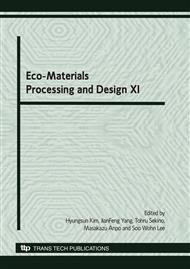p.456
p.460
p.463
p.467
p.471
p.475
p.479
p.483
p.487
Electroless Copper Plating on Ti3SiC2 Powder Surface Using Ascorbic Acid as a Reducing Agent
Abstract:
Cu-coated Ti3SiC2 powder was fabricated by electroless copper plating method from CuSO4 using poisonless ascorbic acid (C6H6O4(OH)2) as reducing agent. Sensibilization and activation on Ti3SiC2 powder surface was performed by Sn-Ag catalyst system. Surfactants lauryl sodium sulfate (SDS) and Polysorbate 80 (Tween-80) were used as modifiers to control copper particle sizes and shapes. It is found that good pretreatment and activation can obtain fully-formed copper coating. The optimal copper deposition rate can reach to 2.053 g.dm-2.h-1 at 80°C . The best coating effect can be obtained in the samples modifying with 12g/L SDS+8ml/L Tween-80.
Info:
Periodical:
Pages:
471-474
Citation:
Online since:
July 2010
Authors:
Keywords:
Price:
Сopyright:
© 2010 Trans Tech Publications Ltd. All Rights Reserved
Share:
Citation:


